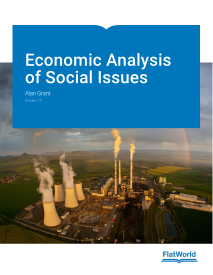Textbook Details

- By:
- Alan Grant
- Published:
- July 2020
- Discipline:
- Economics Textbooks
- ISBN (Digital):
- 978-1-4533-9896-8
Economic Analysis of Social Issues v 2.0, presents an innovative treatment of contemporary social problems using a minimum of mathematical and graphical analysis. The book’s student-friendly approach is based on simple supply and demand analysis and elementary game theory. It is applicable to a broad class of social problems such as pollution, health care, the depletion of natural resources, and inflation, and covers both microeconomic and macroeconomic topics.
Designed for use in a one-semester economic issues course for freshman and sophomore nonmajors. The text may also be appropriate for a one-semester survey of economics course or as a supplement to a standard principles of economics textbook.
- Chapters 1–4 present fundamental economic concepts, such as scarcity, trade-offs, and opportunity costs. These chapters then go on to develop the analytical tools used throughout the remainder of the book.
- Chapters 5–15 discuss the market mechanism and the price system. Next, they address contemporary microeconomic issues such as pollution, health care, and discrimination. These chapters emphasize the roles that property rights, transactions costs, and information play in creating social problems.
- Chapters 16–21 explain the basic functioning of the macroeconomy and address critical macroeconomic issues such as monetary policy, fiscal policy, unemployment, and income inequality.
